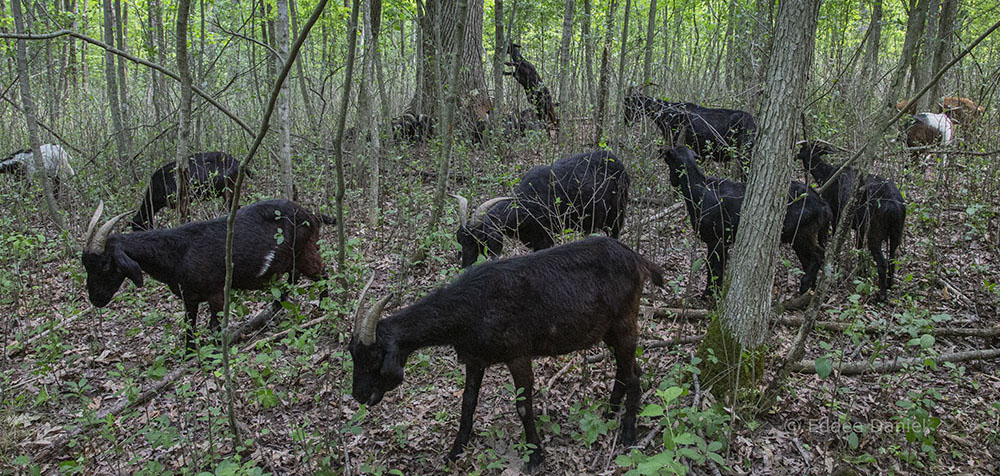
The dramatic effect of the Grazing Goats on invasive buckthorn!
June 25, 2020 | Topics: Spotlight, Stories
By Eddee Daniel
At first, we can’t see any goats. But what we can see is a dramatic change in the forest. We have to walk some distance along the electrified fence that holds in the goats in order to reach the battery pack to turn it off. Outside the fence everything is green and lush, the understory so thick with buckthorn it seems impenetrable. But inside there is no understory at all. We can see well into the woods through the spindly upright sticks that had, until four days ago, held foliage equally dense and impenetrable.
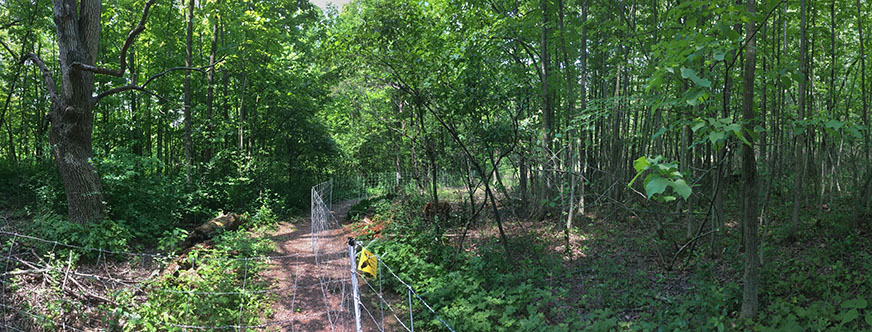
I have come back to Pukaite Woods in Mequon Rotary Park with Ozaukee Washington Land Trust’s Project Coordinator, Christine Bohn, and Development Director, Leona Knobloch, to check on the goats’ progress in their effort to control invasive species. If you missed part 1 of this story you’ll want to check it out and see how this temporary paddock looked the day the goats were released.
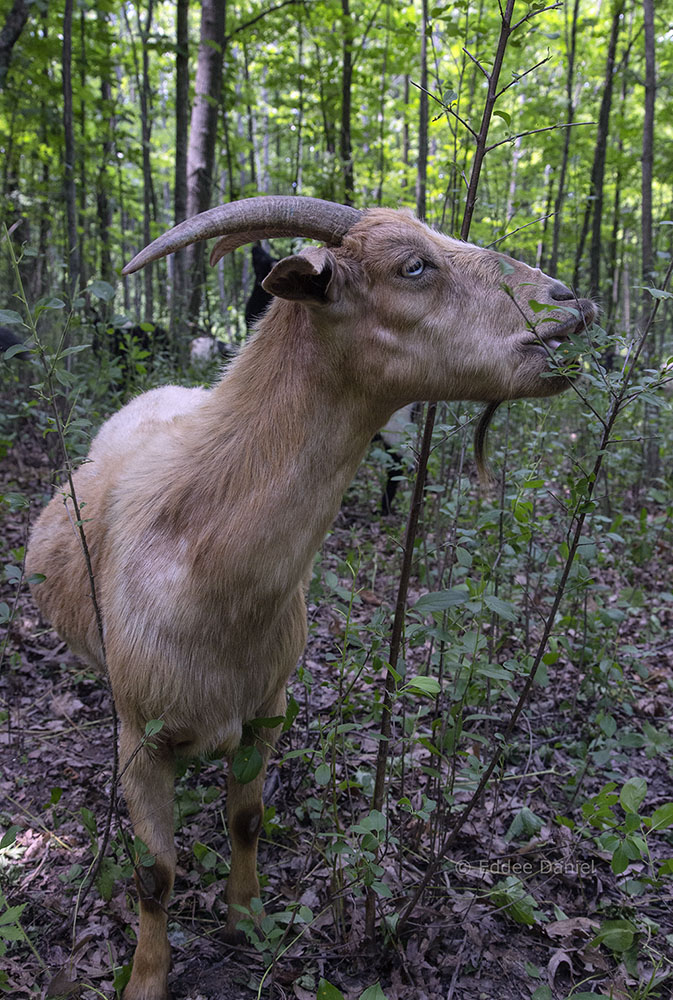
Christine cuts the electricity and we enter the paddock. The goats are easy to spot from a distance through the naked understory. They are sheltering from the mid-day heat, lying in a cluster in the shade of an enormous oak. When we appear, however, they readily interrupt their siesta, coming to their feet and trotting quickly towards us. This is quite opposite of what I saw when they were first released, when they scurried away from the people and towards the luxuriant foliage of the understory. Now, with nearly everything within reach stripped bare, they are looking for a handout!
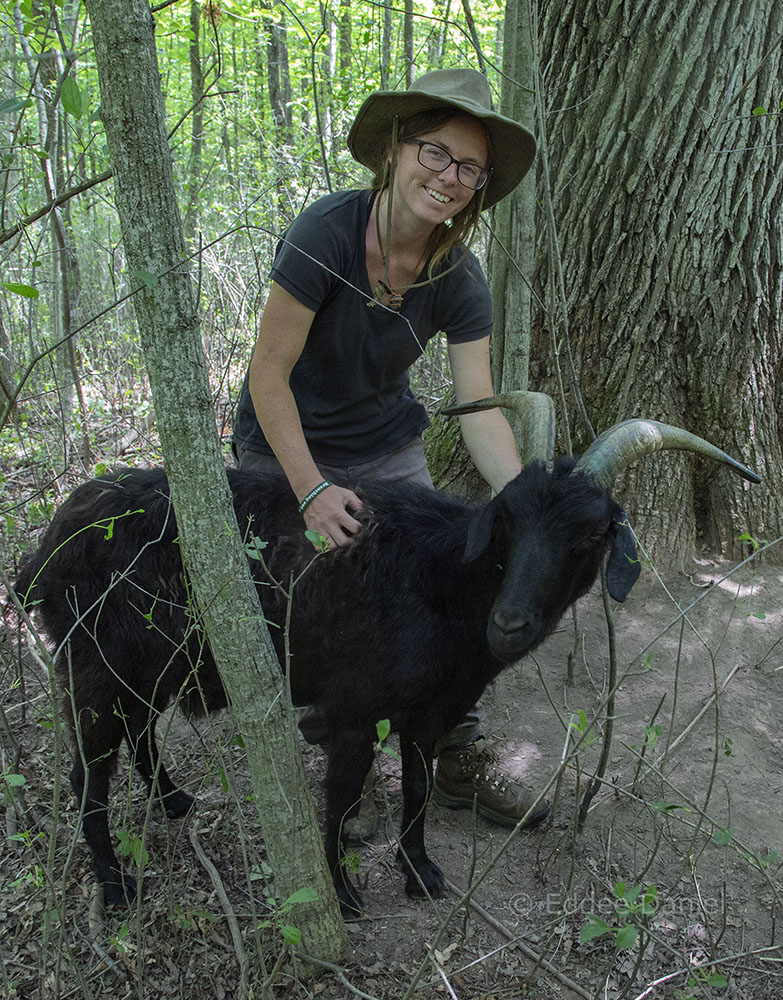
As I begin to photograph them I have trouble staying far enough away to focus as they push right up to me, practically trying to lick my lens. Others nudge me from behind. Then Christine brandishes a bucket of corn and they all rush to surround her. Once satisfied that we humans have no more to offer they fan out to nibble at the sparse leftover leaves still clinging to the scrawny stalks all around. Now and then one of the larger goats stretches up to tip over one of the taller, flexible trunks to reach a crown of foliage. Nearby goats dash into the fray and engage in the kind of feeding frenzy I’d witnessed on the first day. This time, though, it is all over in minutes. Then they forage on.
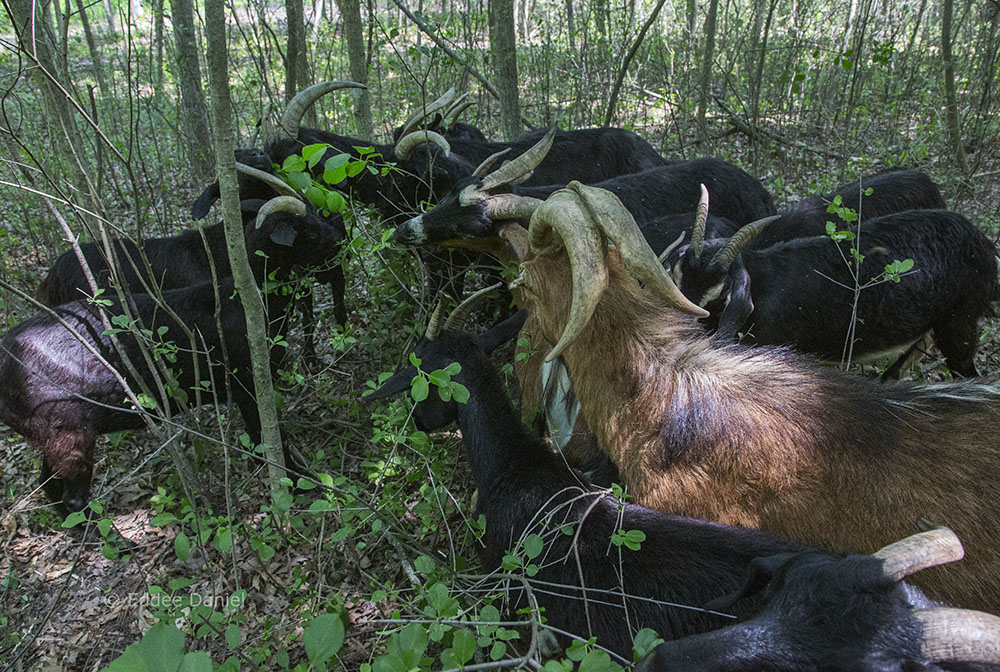
After my first report on this project I received a number of messages in response. Most expressed the kind of amazement that I felt at the time. But a few questioned the effectiveness of the endeavor. Two reasonable concerns surfaced that I wanted to ask about. The first: Don’t the roots of the buckthorn have to be treated with herbicide in order to prevent regrowth? Christine, who has witnessed the successful use of goats in other locations, explained how this project works: The goats strip the foliage in the spring, early in the growth cycle. The buckthorn then expends a lot of energy to resprout during the summer, which weakens it. The goats are brought back later in the season to repeat the process, further weakening the plants. The plants will indeed regenerate next spring but in a weakened state. The goats do their thing all over again. The key to the success of this project is the repetition in multiple years. According to Christine, herbicidal remedies also require multiple treatments in order to be effective.
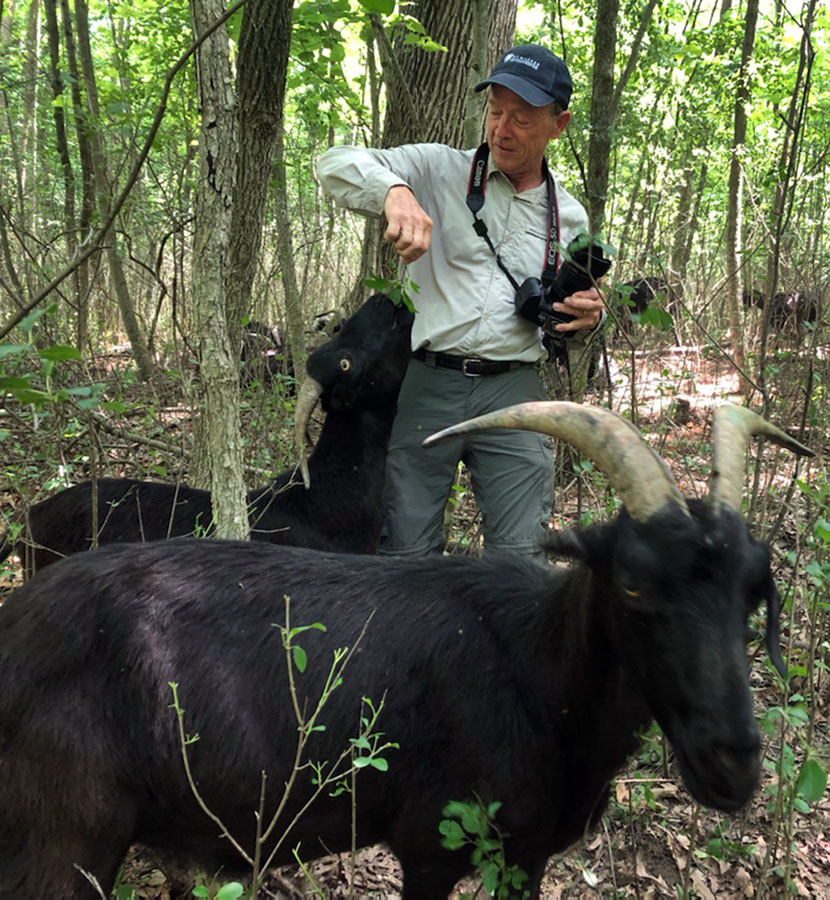
Photo by Christine Bohn.
The other objection, as one reader pointed out, is that “goats eat EVERYTHING, not just invasive plants.” This is true. The goats are only used, Christine told me, in severely degraded landscapes. The sections of Pukaite Woods that are being subjected to this process are 75-90% buckthorn, she says.

As became apparent to me, this is an expensive and time-consuming enterprise. In addition to the cost of renting and transporting the goats multiple times, there is the labor of care for live animals and maintenance of the paddock during the several weeks they are in place. Christine is assisted by volunteers who check each goat daily to monitor their health, fill their water trough and walk the perimeter fence to troubleshoot. So far, there have been two incursions by deer. The battery to charge the fence must be replaced every couple days. Despite the expense, however, when taking into consideration the limited resources of most environmental groups and municipalities, adding a herd of 38 goats to your crew goes a long way. OWLT has decided that the benefits are worthwhile and encourages other groups to consider this novel management technique.
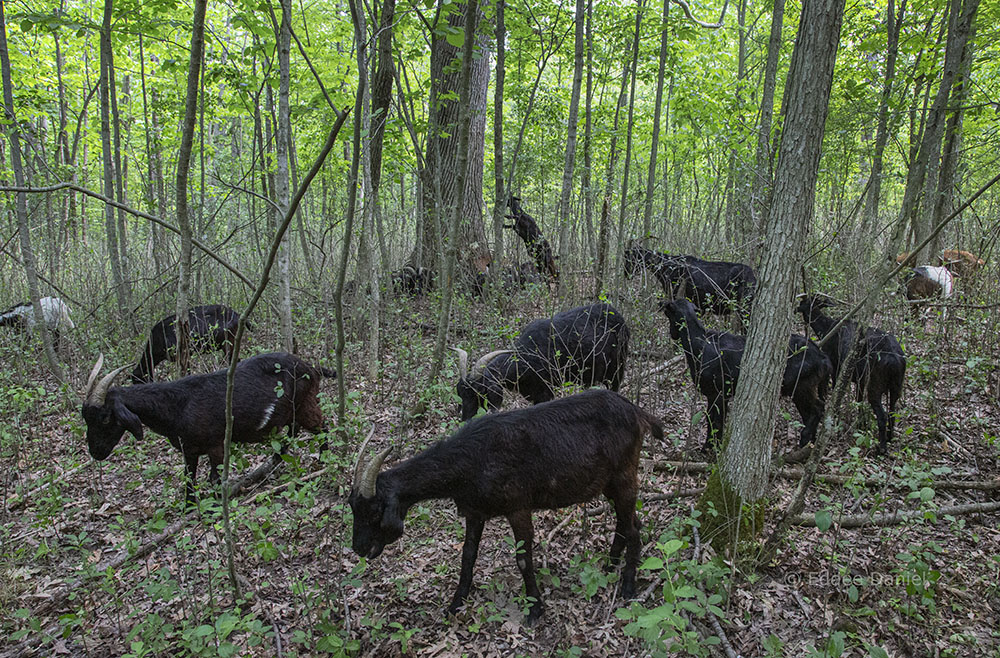
If you want to see the goats in action, check out this amazing video, by Leona Knobloch, Development Director of OWLT.
And if you want to see the “before” that preceded this “after,” click here.

Note:
Thanks go to the Mequon-Thiensville Sunrise Rotary Club for their support of this project. However, as I said, it is expensive and more support is needed. The goats will be working at this site for several weeks and will return later in the season for a subsequent graze. Ozaukee Washington Land Trust hopes this demonstration project will lead to a local goat herd servicing the Ozaukee area in years to come. If you would like to “sponsor a goat,” please go to the OWLT website.
All photos by Eddee Daniel, except as noted. Eddee Daniel is a board member of Preserve Our Parks. Ozaukee Washington Land Trust is a project partner of A Wealth of Nature.

